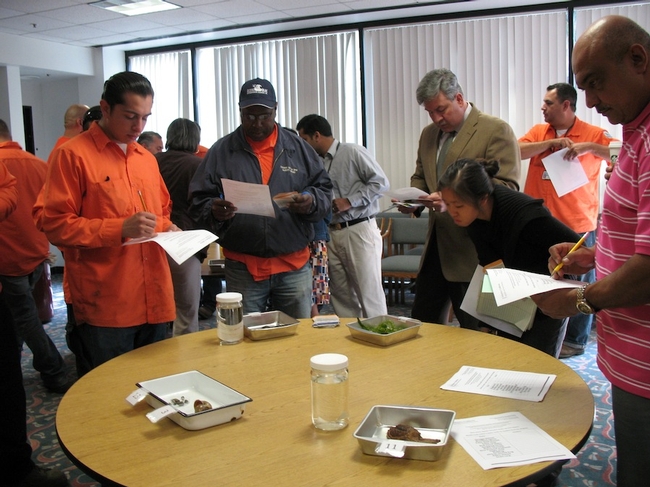Who ya gonna call? If you spot a suspected aquatic invader, where you report it depends on the critter or weed.
Remember to take photos with a camera or, even better, geo-tag them with a smartphone. Take a snapshot that shows just where you saw the invasive species, such as a streambed, lake or pond. Next, photograph the whole animal or plant and then add close-ups of distinctive features. For example, check mussels for “byssal” threads that attach them to surfaces and photograph them. If it’s a waterweed, add close-ups of leaves, flowers, roots, etc. Handle shellfish and plants carefully. AVOID picking up or getting close to crayfish, snapping turtles, clawed frogs, snakes or others that may be able to bite or scratch you!
If it’s an animal (mussel, clam, snail, crayfish, crab, fish, frog, snake, turtle, etc.) or a marine plant (such as the brownish Asian kelp that's also called wakame, or the little bright-green feathers called Caulerpa taxifolia), contact California Department of Fish and Wildlife’s (CDFW’s) invasive species hotline. You can reach them at (866) 440-9530. The message says it is the quagga and zebra mussel hotline, but they also handle other invasive animals and marine plants. Or, you can email them at invasives@dfg.ca.gov
Visit the CDFW online for their Invasive Species Report Form that you can fill out on your computer. Either print the form and send it with pictures or samples to the address on the form. Or, “print” the completed form as a .pdf file and email it to the above address along with e-photos. And, because dead creatures and seaweeds rot quickly, pictures may be the better way to go!
You will need to tell CDFW the name (if you know it) of the suspected invader and whether it is a plant, shellfish, snake, fish, frog, etc. Next, describe its size, color, shape and other distinctive features. Give the date and the California county where it was sighted, plus directions to the location where you saw it. (If you have geo-coordinates, give them, too.) Give the name of the land owner or manager, for example “John Doe” or CA Department of Parks and Recreation.
CDFW may need to contact you for more information, so they also ask for the first and last names and contact information of the person who sighted the suspected invasive species.
If the suspected invader is a waterweed, report sightings to the Agricultural Commissioner’s Department in your local county government. A list of county Ag Departments is available from California Department of Food and Agriculture First, click your county on the map. Look for your local Ag Department’s address and a phone number to call for instructions on how to submit a report and a sample. If you can get there quickly, you may be able to bag, tag, chill and deliver a waterweed specimen before it rots. Otherwise, spread out the waterweed, place it between sheets of absorbent paper and add a weight, so it will dry flat. Change the paper often, until the sample is completely dry.
Cooperative Extension Advisors Leigh Johnson, Sabrina Drill and Darren Haver trained 181 staff of public agencies and a UC research center in a Spring 2013 workshop series on how to recognize, report and decontaminate their gear to avoid spreading suspected aquatic invasive species.
Attached Images:
